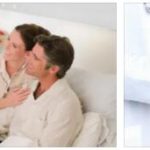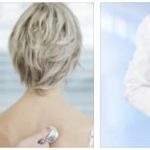Small patches or lumps on the skin, usually only a few millimeters in size, are referred to as Janeway lesions . They are painless and usually occur on the extremities. Some sources list Theodore Caldwell Janeway as their discoverer, but they were actually first discovered by his father, the American clinician and pathologist Edward G. Janeway (1841-1911).
What are Janeway lesions?
According to the guidelines of the American Heart Association (AHA) from 2007, which the German Society for Cardiology (DGK) has also followed, prophylactic measures are primarily required for patients with heart valve replacement, after surviving endocarditis, with congenital heart defects and surviving heart transplantation.
According to foodezine.com, Janeway lesions are erythematous (reddened) or hemorrhagic (bleeding) skin lesions that can be either flat or raised. They are painless, usually between 1 and 5 millimeters in size, reddish-brown in color and can be found on the palms of the hands, fingers, soles of the feet and toes. As a rule, they are caused by a microembolism, i.e. the occlusion of the smallest blood vessels by a blood clot.
Pathologically, they are described as microabscesses of the dermis, i.e. the leather skin. Inflammatory foci invade the cell tissue and cause necrosis, which means the cell tissue breaks down. The epidermis, i.e. the upper layer of skin, is not affected by Janeway lesions. The lesions usually originate from a septic embolism, which deposits bacteria in the blood vessels and thus causes the microabscesses.
Causes
The Janeway lesion is an indication of bacterial endocarditis, i.e. inflammation of the inner lining of the heart (endocardium). It is usually caused by staphylococci or streptococci. The possibilities of infection are diverse.
Wounds, including those caused by invasive medical measures, can be a cause. However, bacteria can also get into the blood through injuries to the oral cavity or feverish illnesses, such as urinary tract infections, pneumonia or tonsillitis, bronchitis, and thus form the basis for endocarditis. In people with a healthy heart, these bacteria are usually intercepted in good time by the scavenger cells.
However, patients with heart disease or heart valve replacement have an increased risk of developing an inflammation of the inner lining of the heart. If left untreated, endocarditis is usually fatal, but it can be treated well with antibiotics.
Symptoms, Ailments & Signs
Janeway lesions can cause a wide variety of symptoms and symptoms, depending on where they occur and the underlying cause. Typically, the skin changes occur on the hands and feet. There, reddish-brown spots or nodules form, which reach a size of one to five millimeters and are associated with increasing itching.
Pain usually does not occur, although ulcers can form that are very painful. Infections can also occur in the area of the ulcers, leading to an increase in symptoms. The symptoms of Janeway lesions usually appear very suddenly. The spots often develop overnight and grow larger over the coming days.
The typical itching usually occurs between the third and fifth day, while the formation of ulcers takes place after one to two weeks. If the Janeway lesions are caused by a heart defect, they can lead to cardiac death if left untreated. If treated early, the small spots will go away after a few days to weeks.
If ulcers have already formed, scars can remain. In severe cases, permanent sensory disturbances or even signs of paralysis appear in the affected area, which also represent a great psychological burden for the person concerned.
Diagnosis & course of disease
Since the skin changes themselves usually do not cause any symptoms, they are often discovered as secondary findings. This means that the patient is being treated by a doctor for another illness. As a rule, the Janeway lesions are recognized as such by the doctor. However, a biopsy of the affected tissue is very often necessary in order to make a reliable diagnosis.
Treatment of the Janeway lesions themselves is not possible. They disappear again after the underlying disease, i.e. endocarditis, has been treated. However, ointments may be prescribed for relief. Treatment of the lesions is therefore always accompanied by treatment of the causative disease, the endocarditis. Since this is a life-threatening condition, treatment must be in the hospital.
There, antibiotics are administered to the patient as intravenous infusions. The choice of the appropriate antibiotic depends on the type of pathogen. If the patient is in a life-threatening condition, the doctor does not have time to wait for the result of the blood culture. Then the administration of antibiotics must be started immediately.
In less acute cases, the result of the blood test can be awaited so that the antibiotic can be better tailored to the pathogen. The treatment usually lasts four to six weeks and aims to completely remove the bacteria from the affected tissue. If this therapy does not bring the desired success, cardiac surgery must be performed very promptly.
This improves the patient’s chances of survival and also prevents an embolism. In order to avoid such drastic measures, antibiotic therapy is started as soon as endocarditis is suspected. It is not always possible to prevent an initial illness, but the consequential damage can be well controlled and contained.
Complications
The Janeway lesion results in patches on the skin in most cases. These spots are red and in most cases relatively small. However, they can lead to aesthetic problems, so that those affected do not feel comfortable with the spots and this leads to inferiority complexes or reduced self-esteem. However, these patches are painless and do not cause any further discomfort.
However, ulcers can also form on the spots themselves. It is not uncommon for patients to withdraw from social life due to the Janeway lesion and therefore also suffer from psychological problems or depression. As a rule, the Janeway lesion occurs as a result of another medical condition, which in any case must be treated.
If heart defects are the cause of the Janeway lesion, they must be treated by a doctor. Without treatment, cardiac death can occur. In some cases, however, a heart transplant is necessary to limit the symptoms. This can lead to a reduction in life expectancy. In most cases, it cannot be generally predicted whether the treatment will lead to a positive course of the disease.
When should you go to the doctor?
A doctor’s visit should take place as soon as the optical changes first appear. The abnormalities of the skin are a sign and warning of an existing underlying disease. It is advisable to have these medically examined and diagnosed so that no further illnesses and thus a deterioration in health occur. In most cases, Janeway lesions resolve on their own once the underlying disease is treated and cured.
If, despite all efforts, this does not happen as desired, a doctor should be consulted if the red spots on the skin are bothersome or uncomfortable. If the optical flaw causes emotional or mental changes, a doctor should be consulted and asked for advice. If you feel generally unwell or have feelings of shame or disgust, you should consult a doctor.
If there are behavioral problems, a change in personality or social withdrawal, a check-up with a doctor or therapist is recommended. If the lesions increase in size and number, a doctor’s clarification is necessary. If swelling, small lumps or ulcers form on the skin, this development is considered unusual. A check-up visit to a doctor must be initiated so that serious illnesses or blunt injuries can be ruled out.
Treatment & Therapy
Basically, people with heart defects have a higher risk of developing endocarditis. According to the guidelines of the American Heart Association (AHA) from 2007, which the German Society for Cardiology (DGK) has also followed, prophylactic measures are primarily required for patients with heart valve replacement, after surviving endocarditis, with congenital heart defects and surviving heart transplantation.
In this risk group, antibiotic treatment is urgently required before any operation, including dental procedures. Patients are issued with a cardiac passport, which must be carried with them to every operation and examination.
In addition, they should consult a doctor immediately at the slightest sign of an infectious disease, so that antibiotic therapy can be initiated as soon as possible. In the case of an existing allergy to penicillin, oral administration of Lincosamide can be used.
Outlook & Forecast
The prognosis for the Janeway lesion is linked to the causative disease. Medical care should be sought in the event of inflammation, otherwise the symptoms will increase. The itching can cause open sores on the body, which in severe cases can result in sepsis. This poses a potential threat to the life of the person concerned.
If there is a congenital or acquired heart defect, the risk of the patient dying prematurely is increased. If left untreated, cardiac death occurs in many cases. If cardiac surgery is necessary, the associated complications and side effects must be taken into account when making a prognosis.
With an early and comprehensive diagnosis and subsequent treatment, the skin changes can usually be treated well. Within a few days to a few weeks, a regression of the changes in the complexion and subsequent freedom from symptoms can be expected. Some patients may experience scarring of the skin during the healing process.
Consequences such as sensory disturbances or an increase in psychological stress due to the optical changes can occur. In addition, there is the possibility of developing the Janeway lesion again in the course of life. The prognosis remains unchanged with a repeated outbreak of the unpleasant skin changes.
Prevention
The risk groups mentioned above should therefore definitely attend regular check-ups and go to the doctor immediately at the slightest sign of infection. They should also always have their heart pass with them. A healthy lifestyle with a balanced diet, adequate sleep and regular physical activity also helps to strengthen the immune system and thus prevent diseases such as endocarditis and the associated Janeway lesion.
Aftercare
In most cases, the direct follow-up measures for the Janeway lesion are very limited, so that sufferers of this disease primarily depend on a quick diagnosis and subsequent treatment. This is the only way to avoid further deterioration, which can lead to complications.
The Janeway lesion cannot heal on its own, so the patient should consult a doctor at the first symptoms and signs of the disease. The earlier the doctor is contacted, the better the further course of this disease. The disease itself is treated by taking medication, although a complete cure is usually not possible.
Those affected are dependent on taking the medication regularly and on the correct dosage in order to permanently relieve the symptoms. In the case of surgical interventions, the attending physician should be informed about the Janeway lesion so that there are no complications during the procedure. The life expectancy of those affected may also be reduced by this disease.
You can do that yourself
The Janeway lesion must first be diagnosed and treated by a doctor. However, those affected can also do some things themselves to relieve the symptoms and avoid a severe course.
First, a cardiac passport must be applied for, which should be carried to every examination and medical treatment. The underlying heart disease should be treated supportively according to the specifications of a specialist. Depending on the type of ailment, measures that strengthen the heart, other organs and the immune system are recommended. Physical activity is recommended to a certain extent, as is a stress-free lifestyle. In addition, the diet must be changed to avoid further stress on the heart. If signs of an infectious disease appear, a doctor must be consulted immediately.
The Janeway lesion itself cannot be treated with home remedies and self-measures. After medical treatment, increased hygiene measures are indicated. The affected skin areas must be cared for with a medicinal preparation and should not be exposed to any further irritation. Finally, the person concerned should take it easy for a few days and arrange further check-ups with the responsible doctor.


